In the travel sector's bustling world, differentiating oneself can seem like a herculean task. It's a space crowded with travel agencies, brands, and even bloggers, all trying to capture a slice of the global audience's attention.
It's a big enough pie, as the global tourism market was said to be worth $10.5 Trillion in 2022! It's definitely an industry worth investing your time and money in.
But here's the clincher: you went on to start a referral program, hired travel agents, and posted on your social media platforms, but nothing seems to work! If you're stuck, we have a solution for you.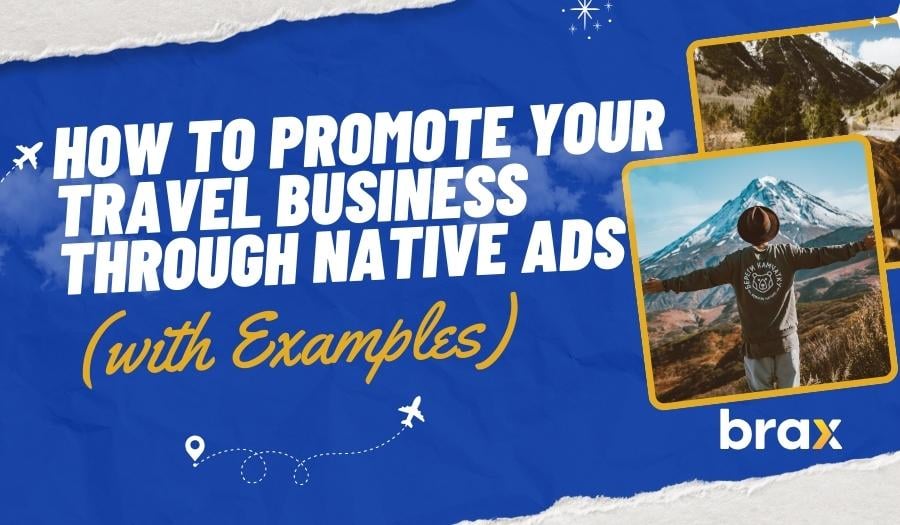
Native Ads Offering a World of Opportunities for the Travel Sector
With this profitable an industry, you can expect competition to be stiff. How then can you be placed front and center of your target market's attention?
Native Ads are a great way to do that. By seamlessly blending into standard content, these ads have the power to metamorphose your audience engagement tactics, making them more authentic and appealing.
While social media platforms are also potent tools for the travel industry, research shows that native ads deliver better ROI.
Native Ads are not just about promoting; they're about storytelling.
They weave your narrative into the content that your audience already enjoys, reducing intrusion and increasing receptivity. For those involved in the travel industry, this could mean the distinction between fading into the background or taking center stage.
Consider this guide as your ally in unraveling and harnessing the true potential of Native Ads for the travel niche market.
Whether you're an established travel agent looking to broaden your reach, an emerging brand striving to leave an imprint, or a blogger eager to share your experiences (and earn from it!), we've got something for everyone.
First Things First: Identify Your Target Audience
One of the biggest mistakes of many travel bloggers and websites out there is that they try to cater to everyone's needs.
What do you call that again? Jack of all trades, master of none.
What this means for us is that if you try to please everyone, you'll end up getting nothing. If you do get something, they're possibly a one-off or just a stroke of luck.
Since you're running a business, it's important to try to draw in audiences consistently and convert them to paying guests. To do that, you first need to choose (or determine) your target market.
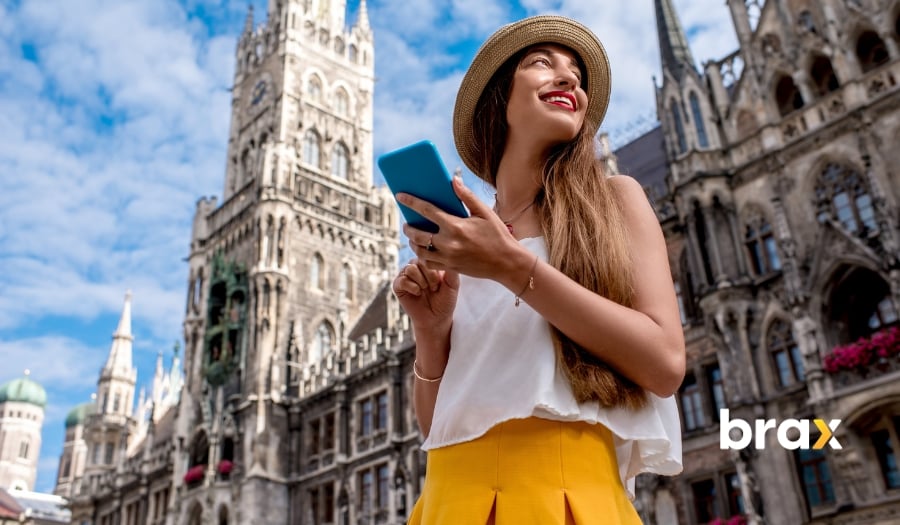
Selecting your target audience depends on the products or services that you offer, but generally, you'd have developed a customer persona that reflects who your ideal customer is.
READ: How to Build the Perfect Targeting Persona
Once you know who your target audience is, you can properly target them when setting up native ads, or any kind of paid ads.
Travel Industry Trends and How to Utilize Them
The year 2023 has ushered in a new wave of exciting developments within the travel market. From the resurgence of personalized travel experiences to the rise of Gen Z as a significant demographic, the industry is experiencing a transformative shift.
The increasing focus on creating empowering and inspiring content indicates a significant change in how we approach travel storytelling, making native ads all the more powerful.
So, for each trend we will discuss below, we'll also outline a few tips and marketing tools when creating your native ads and content.
1. Eco-Tourism and Sustainable Destinations
Eco-tourism goes beyond just visiting untouched places; it's about understanding their ecological importance and actively participating in their preservation. As environmental awareness grows and people seek more meaningful experiences, this travel trend is gaining popularity.
Travelers no longer settle for ordinary vacations; they want transformative adventures that make a positive impact on the world.
Destinations such as Ljubljana, Slovenia; Palau, an archipelago in the Pacific; and Costa Rica, known for its rich biodiversity, are well-regarded for their sustainable tourism initiatives.
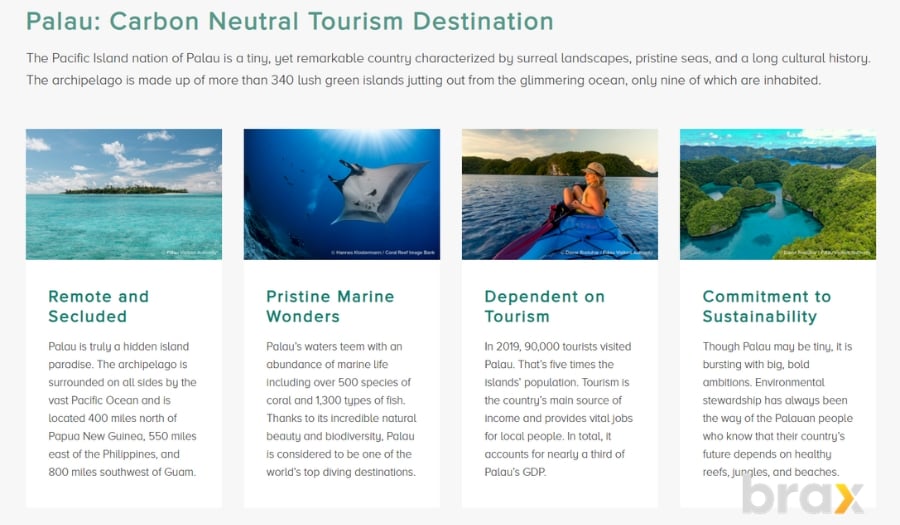
Parallel to this, 'Second City Travel' is carving out its niche. This trend celebrates the beauty of lesser-known destinations, the hidden treasures that can easily compete with their more famous counterparts in terms of allure and experiences.
Interestingly, more than half of global travelers are open to swapping popular cities for less crowded ones if they promise a similar experience but with a reduced environmental footprint.
Simply put: if given the option, people are willing to take the road less traveled.
To leverage this trend, businesses can create engaging blog posts or articles about unique eco-friendly destinations or sustainable travel tips.
You can share stories about locals dedicated to preserving their environment or how the business itself contributes to eco-tourism.
Furthermore, native ads that highlight sustainable practices can make a significant impact. For instance, an ad can showcase a hotel's initiatives to support local communities or a tour company's usage of eco-friendly vehicles.
Here are some examples we found using Anstrex, a native advertising spy tool:
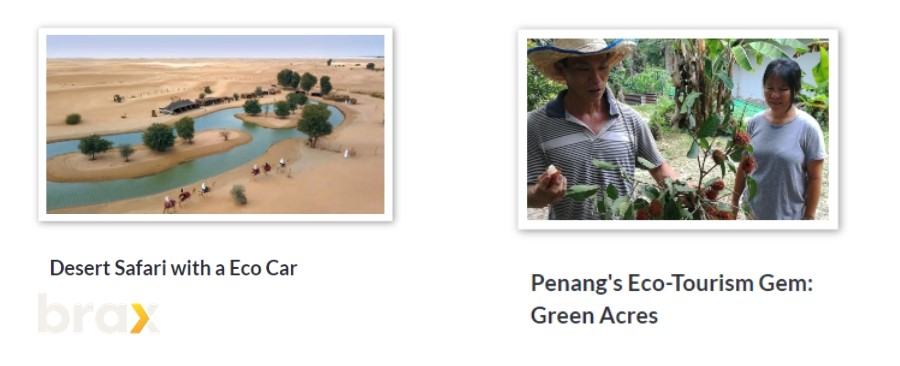
You don't directly tell the reader to book a trip to this place right away, but you are gently guiding them in that direction without sounding too promotional.
2. Experiential Travel
Another burgeoning trend in the travel sector is 'Experiential Travel.' This movement sees travelers seeking authentic, immersive experiences that offer a deeper connection to the destinations they visit.
Experiential travelers aren't merely sightseers; they are cultural explorers bent on diving headlong into the local lifestyle, cuisine, history, and traditions.
Destinations that cater to this travel style are as diverse as the experiences they offer. Consider the bustling spice markets of Marrakech, where tourists can learn about traditional Moroccan dishes, or the tranquil temples of Kyoto, where visitors can participate in an authentic Zen meditation session.
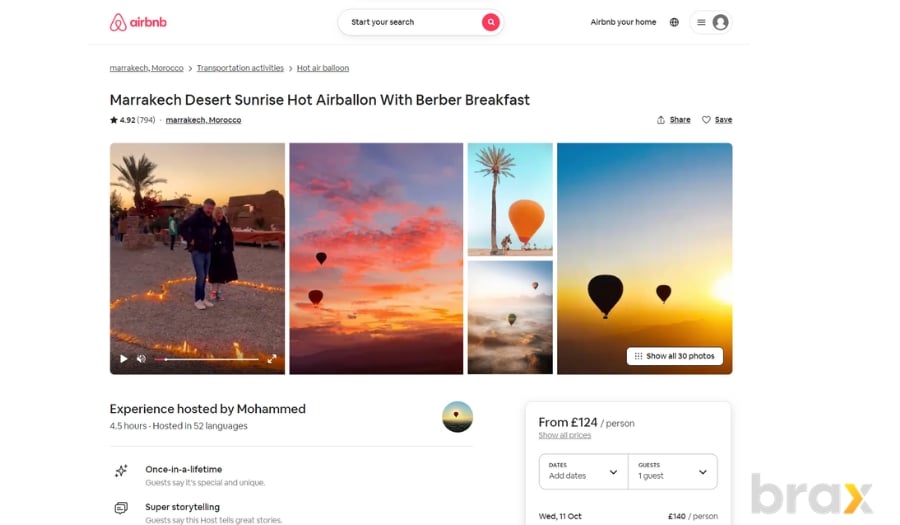
When creating marketing content and native ads, focus on showcasing these immersive experiences, rather than merely highlighting the destination's physical attributes.
For instance, a blog post can delve into the traditional cooking methods a traveler can learn in a Moroccan cooking class. A native ad for a Kyoto temple could tell the story of a tourist achieving tranquility through Zen meditation.
By focusing on the experiences a destination offers, you forge a deeper emotional connection with your audience, and you're not just selling a destination; you're selling an unforgettable experience.
Airbnb has mastered the art of experiential travel. The company offers a range of unique experiences, like riding a hot air balloon in the deserts of Marrakech, learning how to make authentic Egyptian food with an Egyptian cook in Cairo, or participating in a traditional Japanese tea ceremony.
By highlighting these experiences through its marketing campaigns and native ads, Airbnb has successfully tapped into the growing trend of experiential travel.
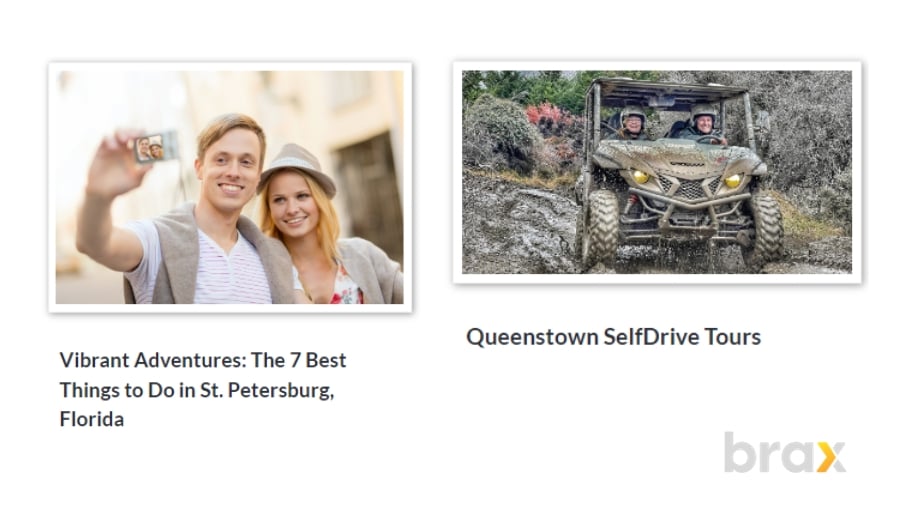
3. Bleisure Travel or Workcation
A popular trend within the industry is 'Bleisure Travel' or 'Bizcation', a blend of business and leisure. This concept caters to business travelers who wish to extend their trips with a few extra days dedicated to unwinding and exploring their destination.
This trend has been driven by the growing preference for work-life integration, especially among Millennials and Gen Z professionals — the digital nomads.
Bleisure travelers are seeking a blend of convenience, connectivity, comfort, and local experiences. Destinations that appeal to them are often cities with a robust business infrastructure, complemented by a rich cultural scene or natural beauty.
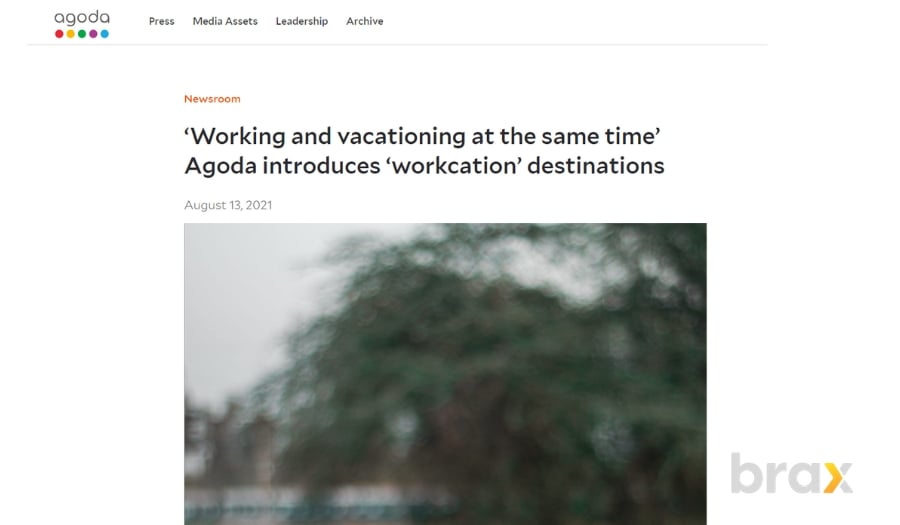
Content and native ads can focus on showcasing the business-friendly amenities and services, as well as leisure activities available in and around the city.
Promote experiences that can be squeezed into a busy schedule, like a quick city tour, a local dining experience, or a short outdoor adventure.
For instance, a blog post might outline the top coworking spaces in Barcelona, interspersed with recommendations for local tapas bars, or surf spots to unwind post-work. Similarly, a native ad for a hotel in New York could highlight its business center facilities and proximity to Broadway theaters or art galleries.
By embracing the Bleisure travel trend, businesses can effectively market to a demographic that is ready to mix business with pleasure, thereby creating a unique and profitable niche within the travel market.
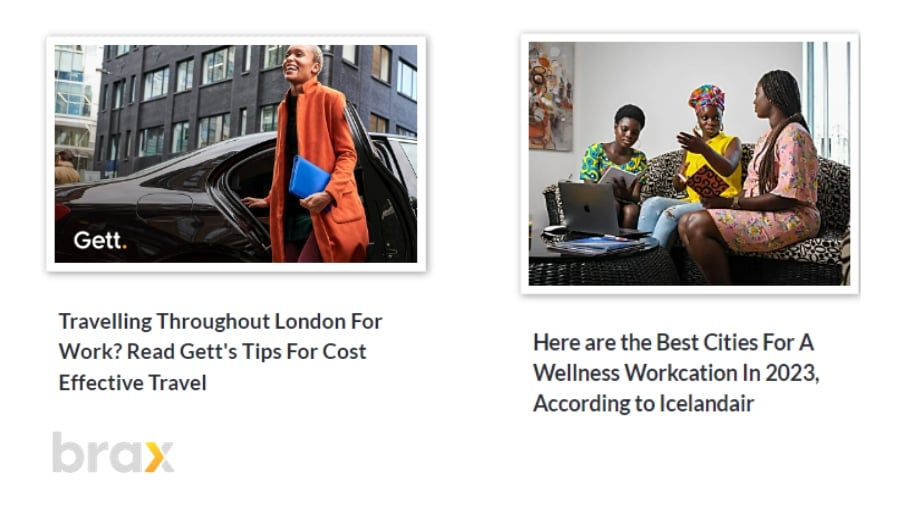
4. Transformational Retreats
Transformative retreats are taking the industry by storm. These immersive programs range from wellness retreats focusing on physical rejuvenation and mental relaxation to spiritual journeys designed for self-exploration and personal growth.
Ever since the pandemic, it seems like people now want to take more meaningful travels that help them with soul-searching and overall healing.
Destinations offering these retreats are often nestled in the heart of nature, providing a serene and introspective atmosphere.
One example is the tranquil landscapes of Sedona, Arizona, which are home to numerous spiritual retreats that promise a journey of self-discovery amidst its red-rock formations. Rishikesh in India, known as the 'Yoga Capital of The World,' is another such destination where travelers seek spiritual enlightenment and wellness.
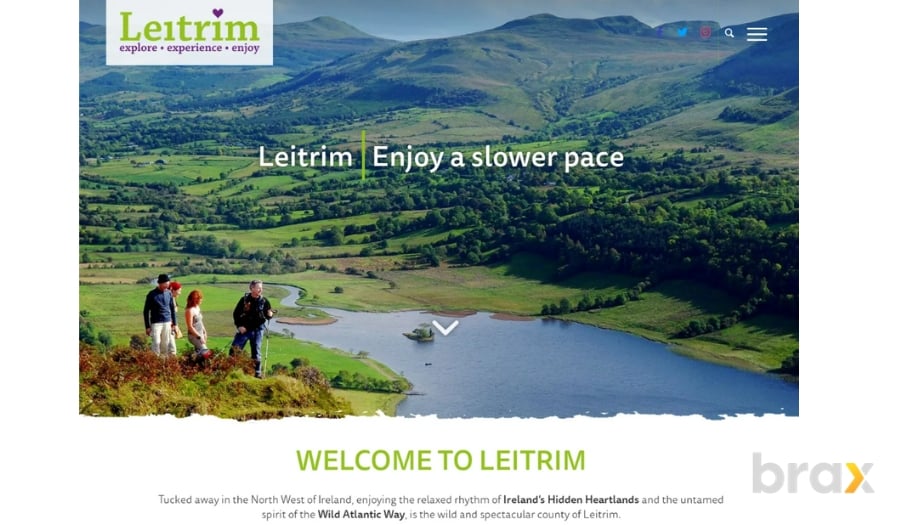
For travel agencies keen to leverage this growing trend, a focus on marketing content and native ads that highlight the transformative potential of these retreats can be beneficial.
Visual storytelling and user-generated content can effectively promote your travel package as they convey the authentic, life-changing experiences these retreats offer.
Travel agents can encourage past attendees to share their transformation stories and highlight the unique aspects of their retreats, such as wellness workshops, meditation sessions, or eco-friendly practices.
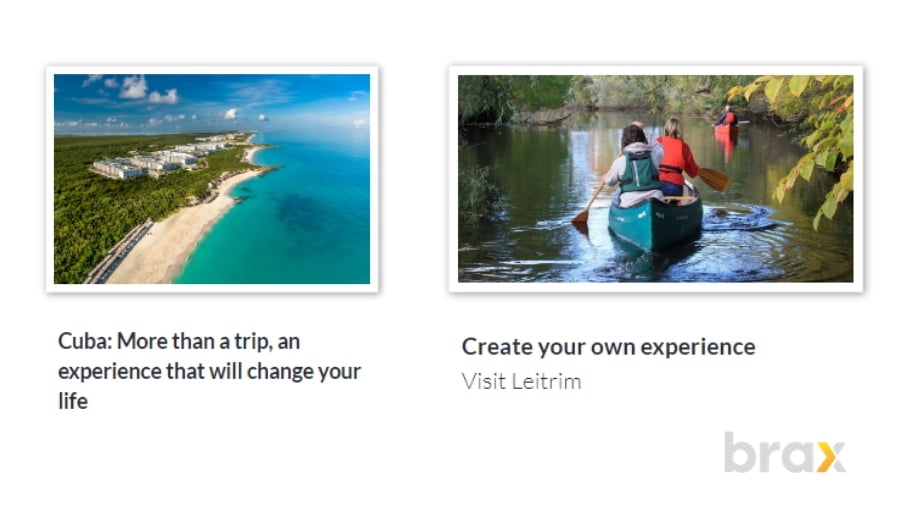
5. TV Shows or Movie Set Destinations
Another rising trend in the travel industry is journeys inspired by TV shows and movies, a phenomenon fueled by the enormous global popularity of series and films. These trips allow fans to step into the world of their favorite characters and experience the locations firsthand.
One shining example of this trend is Seoul, South Korea, which has become one of the most sought-after travel destinations due to the international impact of K-Dramas.
Game of Thrones fans flock to Northern Ireland, Croatia, and Iceland to explore the real-life Westeros. New Zealand, home to the beautiful landscapes of Middle Earth, continues to draw Lord of The Rings enthusiasts from far and wide.
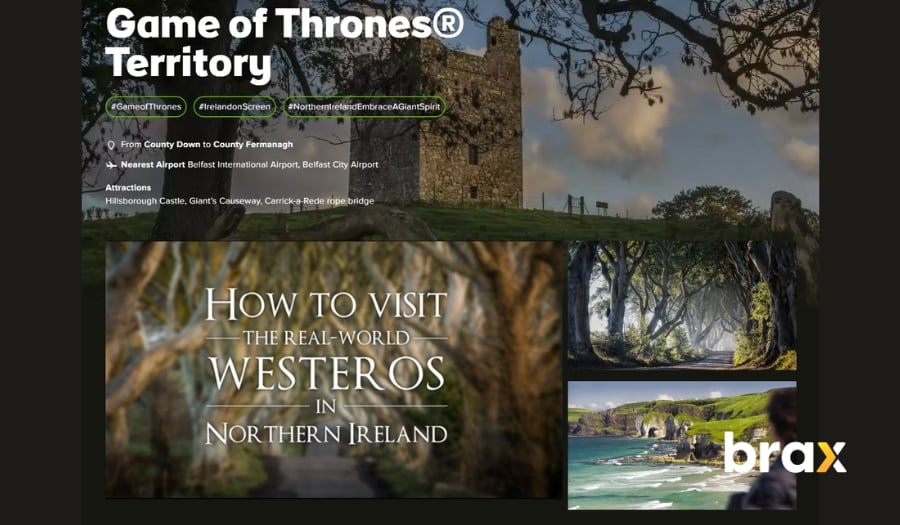
Harry Potter fans, on the other hand, enjoy visiting London's King's Cross station to get a glimpse of Platform 9 3/4 and take a trip to the Warner Bros. Studio for a behind-the-scenes tour.
To leverage this trend, a travel agent can create engaging content featuring these famous TV shows and movie destinations.
For instance, your travel agency could feature guided tours of the filming locations, curated vacation packages revolving around popular shows or films, or even interactive experiences that make travelers feel like they're part of their favorite story.
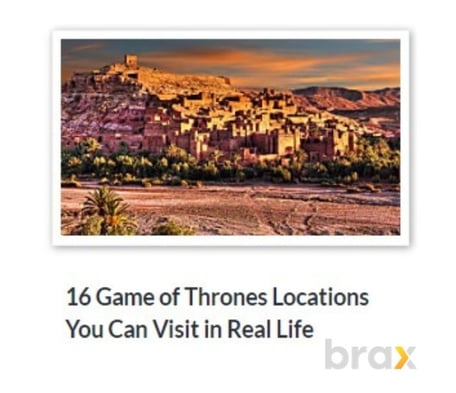
Engaging content that tells a story, showcases the allure of these destinations, and taps into the emotions of fans can make all the difference. Authenticity should be the driving force behind these marketing strategies, allowing travelers to dream about and eventually step into the world of their beloved characters.
A great example of this is Tourism Ireland's native advertising campaigns promoting the Game of Thrones filming locations, using stunning visuals and enticing storytelling to attract fans.
6. Multi-Generational Travel
Multi-generational travel, a captivating trend that has been revolutionizing the travel industry ever since the pandemic, involves trips with three or more generations. These extraordinary journeys provide families with the perfect opportunity to forge lasting memories, strengthen bonds, and bridge generational gaps.
As they say nowadays: it's an opportunity to create Core Memories.
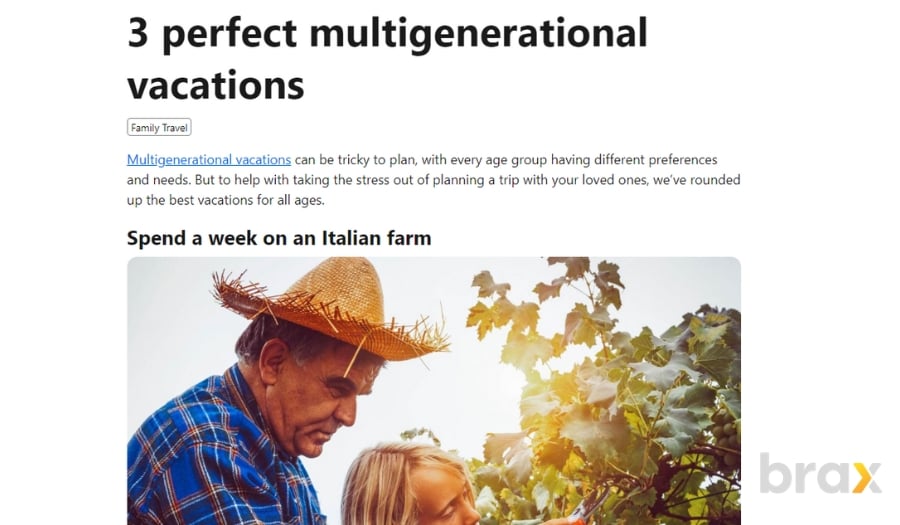
Destinations that cater to this remarkable trend offer a diverse range of activities tailored to captivate travelers of all ages.
Take Orlando, Florida, for example, a beloved spot featuring Disney World for the little ones, golf courses for the adults, and serene beaches for the elderly. In Europe, cities like Rome and Paris charm visitors with their rich blend of historical sites, art museums, tantalizing gastronomy, and contemporary attractions.
To leverage the immense potential of this trend, create captivating content that showcases the myriad offerings of your destination, appealing to different age groups.
Promote your travel agency packages that include a delightful mix of activities suitable for all generations. Consider accommodations that cater specifically to multi-generational needs, and tantalize taste buds with dining options that satisfy everyone's palate.
7. Gastronomic Travel
Gastronomic travel has become a popular trend in recent years, captivating food lovers worldwide. It encourages exploring destinations through their unique culinary offerings, immersing in local food culture, participating in cooking classes, or indulging in wine-tasting sessions.
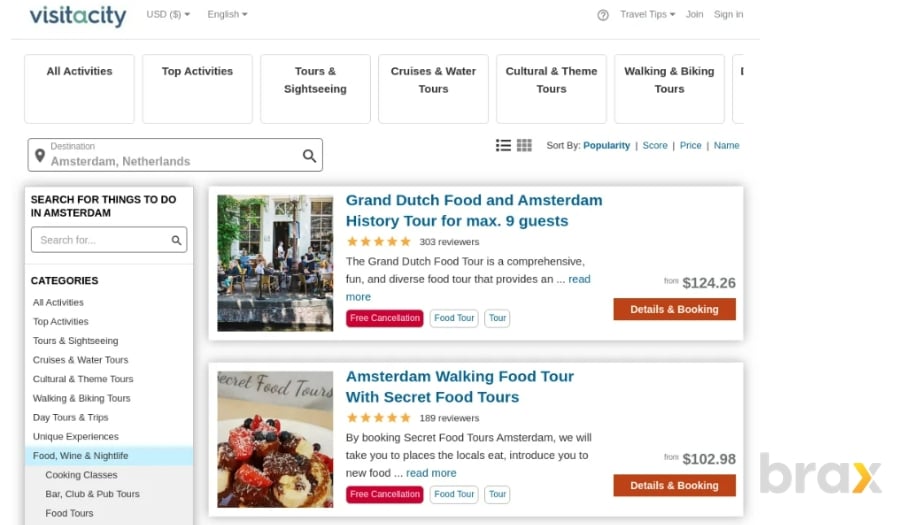
Notable gastronomic destinations include Lyon, France, known for its vibrant food culture and traditional bistros. There's also Tokyo, Japan, where you can discover the art of sushi-making. Finally, there's Oaxaca, Mexico, which is renowned for its diverse and dynamic street food scene.
To embrace this trend, travel blogs can create mouthwatering content featuring the local cuisines of these food-centric destinations.
A great way to do this would be to weave compelling narratives around gastronomic experiences, such as a day in the life of a local chef or a food tour through bustling markets. Interactive content, such as cooking tutorials or virtual wine tastings, can provide a tantalizing taste of what awaits travelers.
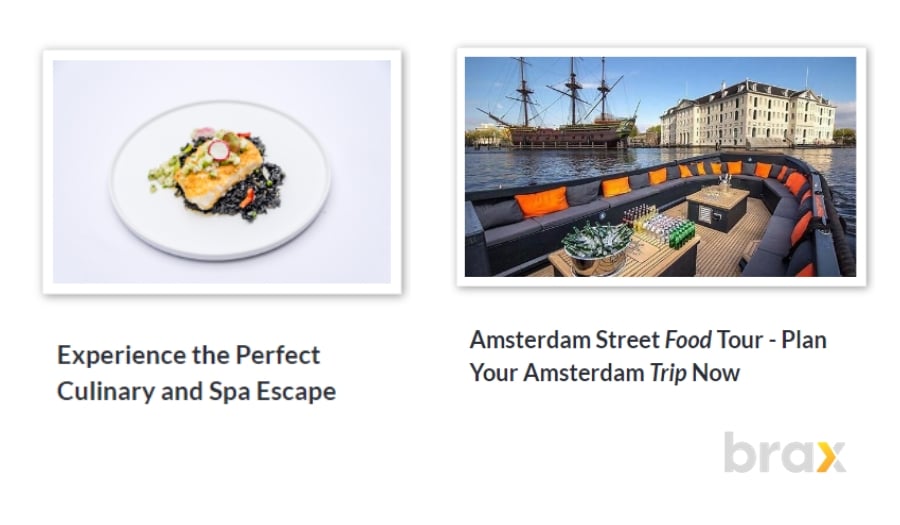
8. Nostalgic Travel
People are totally into nostalgic travel these days! They're all about revisiting places that mean something to them or exploring spots that have a cool historical vibe. It's all about reconnecting with your roots and taking a trip down memory lane.
So many awesome destinations cater to this trend. Like, check out Boston in the US. It's got this killer mix of history and old-school buildings that'll totally transport you. And then there's Prague in the Czech Republic, with its epic castles and old-timey streets.
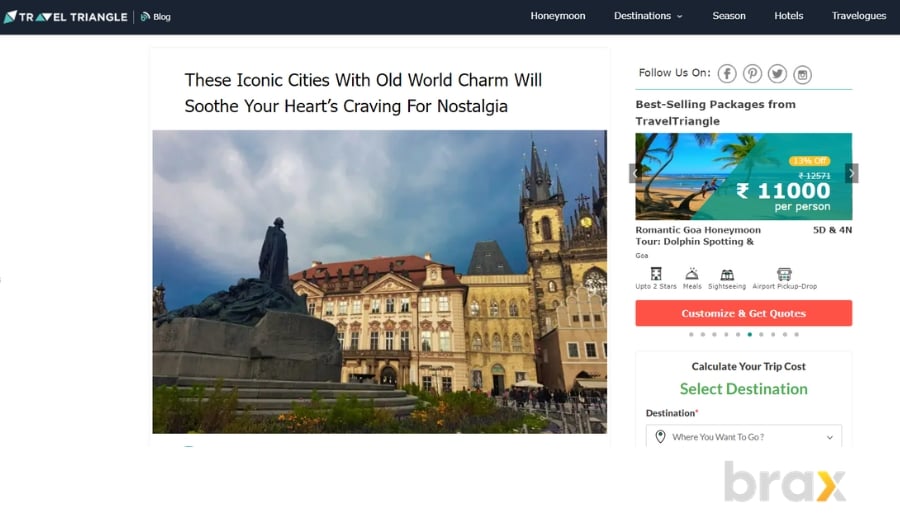
When it comes to native ads and content marketing, what works best are narratives that paint vivid pictures of the past.
Complete with historical anecdotes and personal testimonies, it can create a strong emotional connection with potential travelers, enticing them to embark on their own nostalgic journey.
Instead of focusing solely on the physical aspects of the location, businesses should also highlight the emotional resonance and personal significance these destinations hold, thereby driving the nostalgia factor home.
The key to leveraging the nostalgic travel trend lies in genuine storytelling and emotional engagement — creating content that does not just sell a destination, but a journey back in time.
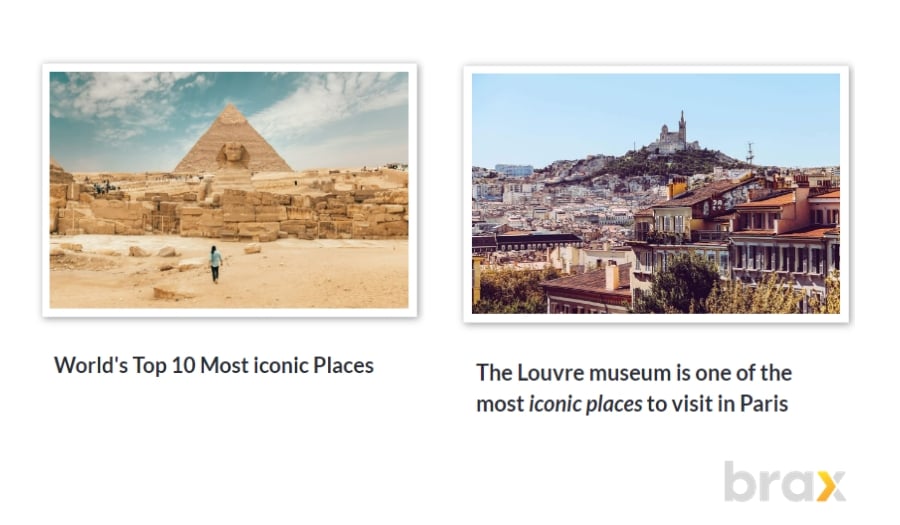
How to Create Engaging Native Ads for the Travel Niche
In the dynamic world of digital marketing, native advertising has emerged as a potent tool to engage audiences in a non-intrusive manner. Particularly for the travel niche, it offers an effective way to weave brand messages seamlessly into existing content, thus striking a fine balance between information and promotion.
After all, when you yourself are done reading an article on a website, your typical reaction would be to search for something else to read. You would likely click on a recommended article and not on an ad, right?
That's where Recommended Content Widgets (a type of native ad) work best.
Whether it's a standard format ad or a more immersive video ad, the key lies in crafting an ad that resonates with the audience's interests and blends harmoniously with the platform's content.
For a more comprehensive understanding of how to create impactful native ads, refer to our article on How to Create High Converting Native Advertising Campaign.
Shifting gears towards more specific and relevant strategies, it's crucial to tailor your native ads to the unique nuances of the travel sector. Here are some tips:
1. Focus on the content
In the realm of travel advertising, the crux of any successful campaign lies in the richness and relevance of its content. Focusing on the finer details and creating a story that resonates with the target audience can drastically enhance the impact of your native ads.
You can do any of the following:
a. Create Themed Content
Don't just write reviews and random lists!
Go for content that follows a theme or niche. This approach involves curating content around a particular topic, which relates to the brand's offerings and resonates with its audience's interests.
For example, a website targeting foodie travelers might adopt a "Culinary Delights" theme, with content spotlighting famous food markets, iconic dishes from different cultures, or behind-the-scenes looks at the kitchens of renowned international chefs.
You can also go for holiday-based articles, like maybe a top Halloween destinations article combined with a Halloween marketing campaign.
Link your actual offer to one or more of the items in your list. People actually like clicking on links when they're relevant and interesting.
These kinds of articles work well with native ads. Here's a good example of an actual travel native ad campaign by Explore.com:
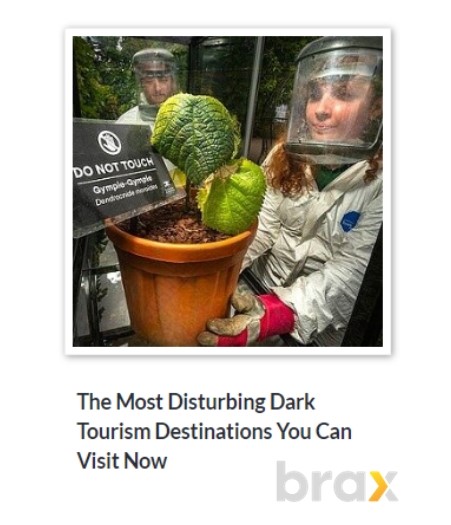
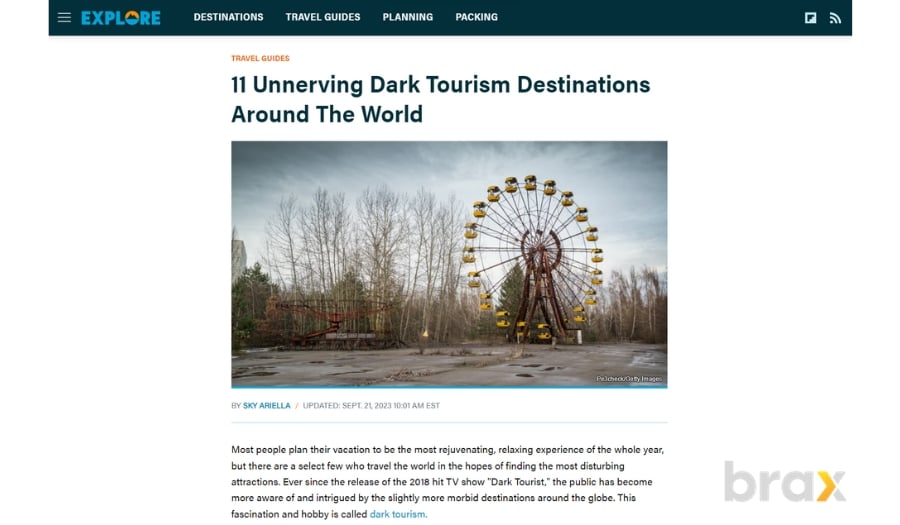
b. Adopt Storytelling in Native Ads
Storytelling is a powerful tool that can elevate the effectiveness of native ads, especially within the travel sector.
People are naturally hooked by engaging narratives that pique their curiosity and evoke their emotions.
When you weave a story around your travel brand or destination, you're offering more than information. You're inviting your audience on a journey that, while virtual at first, has the potential to turn into reality.
Craft native ads that portray experiences rather than services. For instance, instead of advertising a hotel room, sell the sunrise view from the room or the aroma of fresh coffee in the breakfast area.
Take the "Discover the Hidden Gems of Paris" campaign, for example. Rather than focusing solely on the iconic Eiffel Tower or Louvre Museum, which most tourists already know about, this campaign delved into lesser-known but equally enchanting spots in the city.
It told stories of quaint bookshops, charming cafes, and secret gardens hidden away from the bustling tourist paths, appealing to the explorer in every traveler.
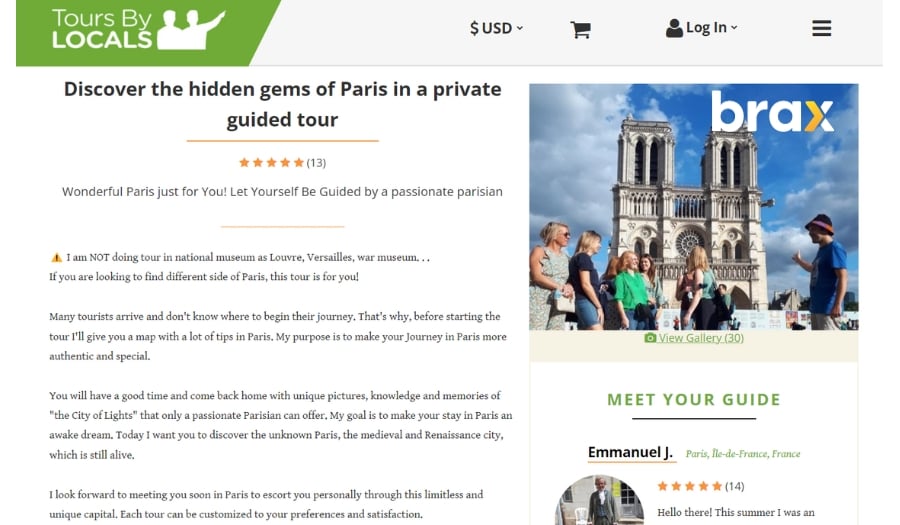
When crafting marketing content and native ads, travel brands can embrace storytelling by focusing on the experiences that a destination offers.
Instead of merely listing down places to visit, weave a narrative around what a day in that city might look like, or share anecdotes of past travelers who found unexpected joy in their journey.
This approach not only makes your content more engaging but also helps your audience envision themselves in these experiences, increasing their likelihood of making a booking or planning a trip.
c. Create Authentic Content
First and foremost, content should reflect the true essence of a destination.
It's about capturing the soul of a place, its people, traditions, and stories. This resonates with the experiential traveler's desire for authenticity and immersion.
Experiential travelers love to share their unique experiences. Encourage this by featuring user-generated content in your marketing material. It not only adds credibility but also creates a sense of community. Look for these in social media, then choose any publicly posted image that includes relevant hashtags.
Get several of them and share these on your landing page through the embed feature (make sure you don't copy the images directly). To add traction to your article, you can even inform the users that their post was featured in an article. They'll be encouraged to share your article, which has the same effect as word-of-mouth promotion.
2. Build the Funnel
Let's take Booking.com's content marketing campaign, where users see a native ad that talks about multigenerational adventures for families. Its blog post features several possible activities and destinations for extended families traveling together.
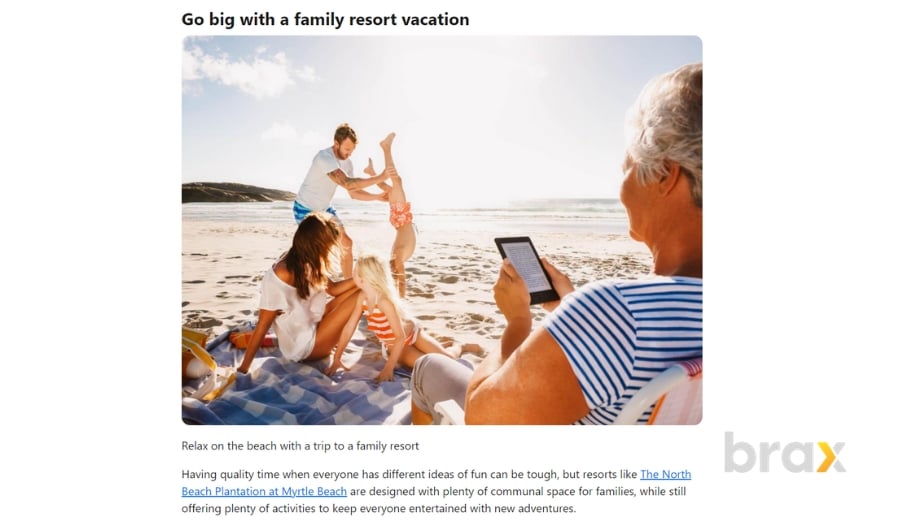
Once you click on any of the links within the article, you will be taken to Booking.com's listings page, where you can start booking the actual destination!
You were moved through the funnel gradually. Even without a need for urgency, you become enticed to not just plan your family vacation but to start reserving accommodations.
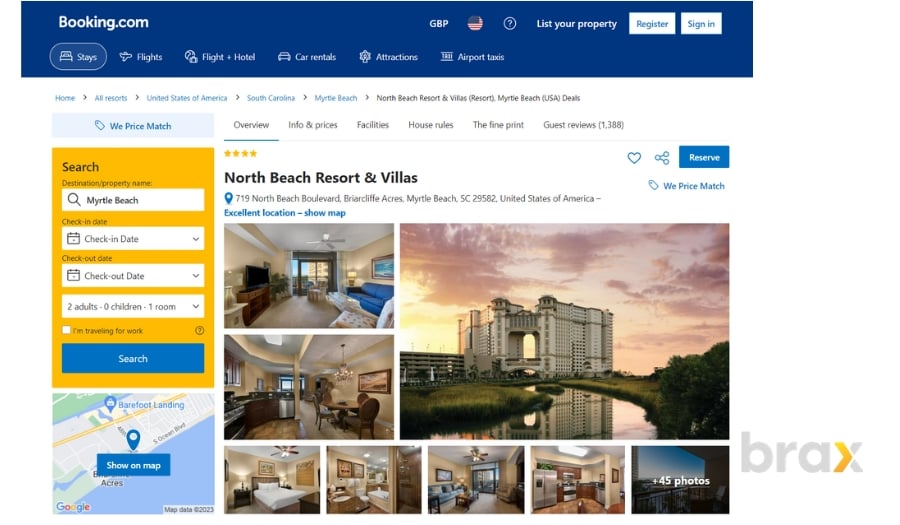
Remember, the goal isn't to hard-sell a product, but to inspire and evoke curiosity in your audience, nudging them towards exploring these travel destinations or experiences themselves.
It's not like other lines of business where the usual tactic is to "push" the customer toward the desired action.
When it comes to travel businesses, the goal should be to "pull" potential clients in.
Entice them. Engage with them. Make them feel something.
When you make them use their emotions, they are more likely to proceed with a purchase or a reservation.
Businesses can effectively use this strategy to build a deeper, more meaningful relationship with their audiences, setting the stage for long-term customer loyalty and growth.
3. Cross Promote by Targeting Categories or Interests Other Than Travel
Your customer will not just be browsing travel websites and related content. It's up to you to capture their attention while they're browsing their other interests.
Cross-promotion by targeting categories or interests outside of travel is a savvy strategy for expanding the reach of your native advertising campaigns, and for creating more personalized and relevant content for your audience.
This strategy operates on the premise that your audience's interests are multi-faceted and are not limited solely to travel.
Let's take the example of Airbnb. They understood that some of their audiences' interests are cultural experiences. They then created content highlighting culture and history in various accommodations and experiences.

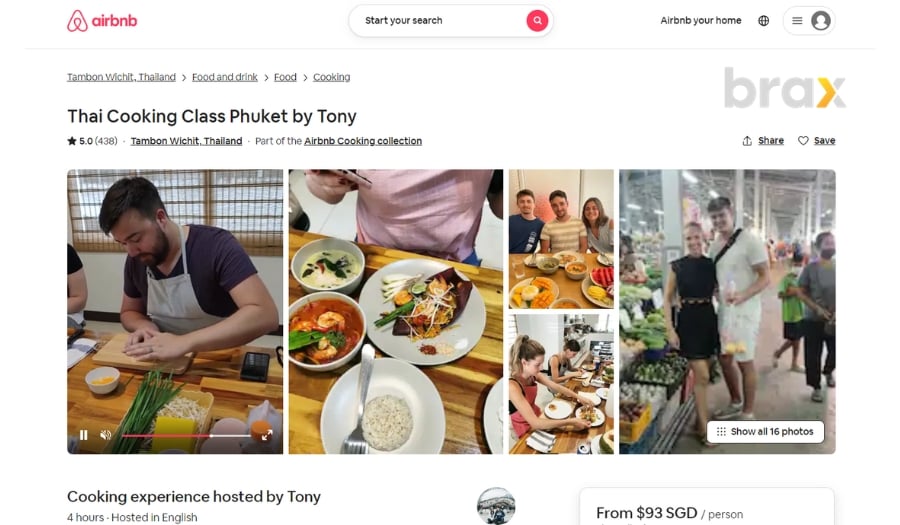
Their native ads are then shown on placements that talk about food and culture. With this, they were able to capture the audience's interest, getting increased sign-ups in the platform (or downloads of their app). They can then nurture these leads for future conversions.
If your travel brand’s primary audience is Millennials, you might create content about budget travel, or collaborate with brands in fashion, technology, home improvement, or wellness that are popular among this demographic.
4. Use Advanced Targeting to Find the Right Audience
Mastering advanced targeting is key for your travel agency business to reach the right audience who are likely to engage with your content and convert.
When you use sophisticated targeting tools, you can identify potential customers based on a wide range of factors such as demographics, interests, behaviors, and purchasing habits.
Let's say your travel company is promoting a luxury cruise experience. Naturally, your target audience would be individuals with a significant disposable income, yes?
With advanced targeting, you can focus your campaign on iPhone users and other high-end phone users, who are often associated with a higher income bracket. MGID allows advertisers to target users based on the price of their devices/mobile phones, which is close enough.
If the advertising platform offers it, you can even target users based on actual income! Outbrain provides this in its advanced targeting options under 3rd Party Attributes. Learn more about Advanced Targeting in Native Ads to properly target your audience.
If you know how to utilize these targeting options, you're in for a better Return on Ad Spend — this I promise you.
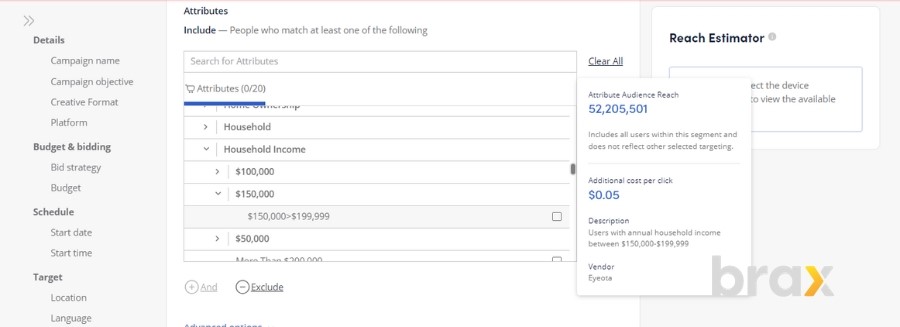
5. Capitalize on Travel Deal Tuesday during Cyber Week
Cyber Week, which includes Black Friday and Cyber Monday, presents an amazing opportunity for travel businesses to maximize their reach and sales. But there's another lesser-known day during this season that travel businesses should target — Travel Deal Tuesday, which falls on the Tuesday after Thanksgiving.
Yes, it's a thing now. Many travelers already know about #TravelTuesday, which happens all year round and simply means deals are always cheaper on a Tuesday. But Travel Deal Tuesday is part of Cyber Week that gives even better deals, and people are jumping in on this opportunity!
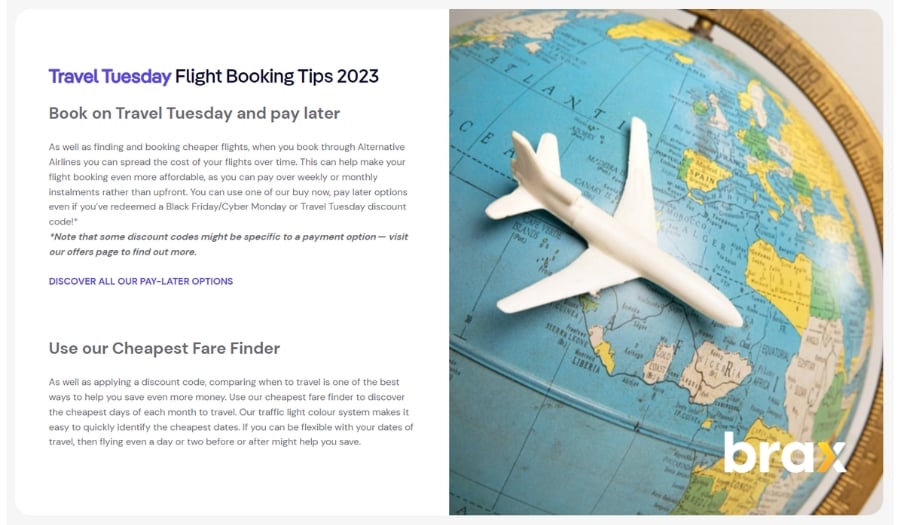
Consider creating a blog post or a series of social media posts with a title like "Top 10 Travel Deals Tuesday Promos You Can't Miss".
You can also create a native ad that leads to this post, with copy that emphasizes the limited-time nature of these deals to create a sense of urgency.
The key to a successful Travel Deal Tuesday campaign is to start planning early. Begin teasing your deals in the weeks leading up to Cyber Week, and use native advertising to keep your audience engaged and excited for what's to come.
6. Remarketing to Users Who Previously Engaged with Your Ad or Website
Remarketing is a powerful way to reignite interest from users who have previously shown interest in your travel-related business or website.
The concept is simple: remind these users about your brand and encourage them to take action.
How? By using native advertising, you can deliver personalized content tailored to their specific interests and past interactions.
Imagine this scenario: a user visits your website, checks out an enticing vacation package, but doesn't make a booking. With remarketing, you can create a native ad that showcases this package, complete with testimonials and exclusive discounts, enticing them to seal the deal.
Another example is retargeting users who left items in their shopping carts. Show them a native ad featuring the hotel or flight they added, and sweeten the deal with a limited-time discount.
Remember, users who have engaged with your brand already have an interest, and with the right approach, you can transform these leads into paying customers.
Ready... Jet-Set... and Go!
And there you have it, globetrotters and hospitality gurus!
We've journeyed through the fascinating world of native advertising and how it can turbocharge your travel business, brand, or even niche ad arbitrage site.
Remember, the key is not just about selling a flight ticket or hotel room — it's about selling an unforgettable story.
It's about transporting your audience to that sun-kissed beach or snow-capped mountain before they've even packed their bags. Whether you're a travel blogger sharing your adventures or a business promoting the holiday of a lifetime, native advertising is your secret weapon.
So, let's put on our explorer hats, embrace the power of native ads, and set sail for success.
If you need assistance, count us in! You can book a free demo of how to run and manage your native ads in Brax. Or you can reach out to us for a more personalized advertising strategy for your travel business.
Safe travels on your marketing journey, folks!

